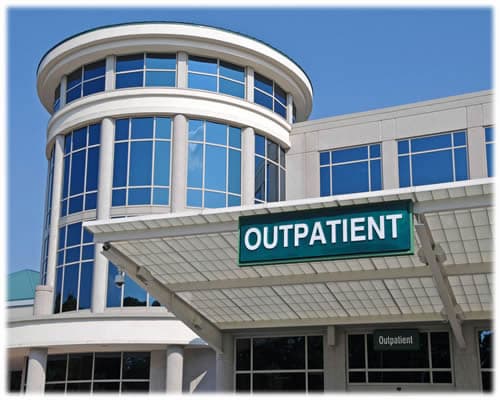by Hilsman Knight, CM&AA, Managing Director
Volume 6 Issue 16, August 13, 2019
I recently came across an article that discussed the key drivers used to estimate the value of a business. This article highlighted seven points crucial to understanding a business's valuation in a transaction. These points were 1) earnings before interest, taxes, depreciation, and amortization (EBITDA) size, 2) revenue trends, 3) profit margins, 4) customer concentration, 5) industry concentration, 6) industry strength, and 7) depth of the management team.
I think that this list would be of little surprise to any professional in the merger and acquisition community. The article's authors hit the nail square on the head in their understanding of valuation on a macro level.
This information can be used to understand valuations of businesses in healthcare. While these qualifying factors provide guiderails that any well-run company should strive to manage and are relevant to any transaction, I thought it would be appropriate to peel back the onion on valuation even further with a more healthcare-focused theme, tying in VERTESS's healthcare experience. More specifically, I wanted to focus on qualitative factors that affect valuation in ambulatory surgery centers (ASCs) as they are one area of my expertise.
In no order, I have included what I believe to be the most applicable qualifiers for driving value in an ASC transaction.
1. CON vs. Non-Con State
A state's certificate of need (CON) status cannot be controlled by the owners of an ASC, but it is an important factor in a transaction and can have a significant impact on the type of buyer interested in an investment opportunity.
ASCs operating in a CON state are often attractive to buyers as the surgery centers' owners have already overcome a significant obstacle to development: the securing of the CON. This is a requirement that those individuals interested in opening new ASCs will need to address.
On the other hand, ASCs operating in a non-CON state may prove less appealing to prospective buyers. Buyers can analyze the startup costs of opening a de novo ASC versus acquiring an operating location. If the costs are similar, this can minimize the pool of buyers because it is often more advantageous to start new. For an optimal valuation, a limited number of interested parties is not desirable.
In summary, owning an ASC in a CON state should prove beneficial to valuation.
2. In-Network vs. Out-of-Network
Buyers in today's market are increasingly less interested in taking on the risk of purchasing ASCs with a majority or significant portion of patients receiving out-of-network services. Insurance companies have been pushing back against providers that bill for out-of-network care, which is increasing the risk level for collecting on out-of-network claims. When providers attempt to bill for procedures performed on out-of-network patients, payors are often finding ways to delay reimbursement or outright rejecting claims.
When a facility is in-network, buyers gain the ability to model future cash flows with more accuracy. Developing these models adds a layer of predictability and alleviates future risk related to the acquisition.
In summary, a healthy mix, with the majority of the patient census as in-network beneficiaries, is more conducive to a better valuation.
3. Commercial vs. Government Insurance
In a parallel domain to the previous point, patient network status directly impacts an ASC's payor mix. This payor mix can weigh heavily on the outcome of a valuation and sale. Well-negotiated commercial contracts can lead to higher reimbursements from payors, which should subsequently lead to higher revenues. Government insurance contracts (Medicare, Medicaid) cannot be negotiated and thus provide ASCs with a fixed, pre-determined payment. A heavily dependent volume of governmental insurance can compress valuation and limit the pool of buyers. Unfortunately, it is often difficult to alter one's payor mix to compensate for greater commercial patients. However, having a good understanding of contracts and payor mix can help identify which buyers could be targeted.
In summary, a healthy payor mix, with a majority of patients covered by commercial payors, can prevent valuation issues and keep more buyers interested in the investment opportunity.
4. Specialty Type
Not all specialties are created equal concerning valuation. More specifically, this concerns those specialties receiving varying degrees of reimbursement rates compared to other specialties. One example would be the difference in reimbursement from specialties like orthopedics, spine, and ophthalmology compared to pain management, general surgery, and gastroenterology. The former tends to benefit from higher valuations due to better reimbursement trends.
In summary, specialty type will have an impact on valuation expectations. It is not something that can be easily remedied on its own. But the next point may help alleviate some of the accompanied valuation issues that come inherent with focusing in a specialty.
5. Single vs. Multiple Specialty
Along the same vein as the previous point, but worth carving out separately, is identifying an ASC's focus as a single- or multi-specialty facility. Similar to the industry concentration point identified in the introduction, ASCs are tied to their own version of industry concentration. Their ability to offer multiple specialties allows for greater valuation due to be less susceptibility of perceived industry risks.
Risks such as those associated with reimbursement can shift substantially. Specialized ASCs are more prone to experiencing significant financial impact if such shifts occur and they cannot hedge away from potential downward spirals.
In summary, the ability offer multiple specialties in an ASC can mitigate against industry risks, regulatory risks, and reimbursement risks and can therefore increase valuation expectations.
6. Number of Operating Physicians
When ASC owners call VERTESS seeking guidance concerning selling their business, oftentimes they are the sole owner and operating physician in their facility. The immediate question following introductions concerns whether an exit strategy has been formulated. The answer to this question tends to associate with an enormous disparity in valuation. The lack of an implemented exit strategy can decimate valuation to the salvage value of the assets in the building. This is compared to an owner with a well-constructed exit strategy who might realize a significant valuation for their planning.
An absent succession plan is not unique to ASC owners but is rather a general oversight for many business owners. It can become especially problematic for an ASC with a single physician owner because the volume of that facility is entirely dependent upon that individual, with a departure of the physician halting the future volume of the business.
In summary, ASCs with just one or only a few owners who plan on exiting the business should gain an understanding of the impact of their exit on the future of the facility. Proper preparations should be made years in advance to better realize valuation goals.
7. Number of Locations
The final topic on this list may be the most relatable to all business owners outside the sphere of healthcare and is most comparable to the initial seven points highlighted in the introduction. More ASC locations signify the ability to more easily scale operations. Multiple locations contribute to more throughput, thus allowing the company to generate more revenue. While a simple concept, the fact is that larger ASCs will generate more interest from a more diverse list of potential suitors because of realizing growth. Growth can be achieved in a number of ways, such as properly managing expenses to better marketing efforts, but significant growth is achieved by opening locations in new markets.
In summary, multiple locations provides a greater market footprint. It leads to more interested buyers because they can see the value of a replicable business model.
The Value of ASC Valuation Expertise
While healthcare shares many qualities with other industries, it is unique in numerous and very significant ways. Within healthcare, ASCs have many of their own unique qualities. VERTESS focuses on healthcare because we understand what is similar, what is different, and what these similarities and differences mean to attracting buyers and securing a fair price for your business.



















